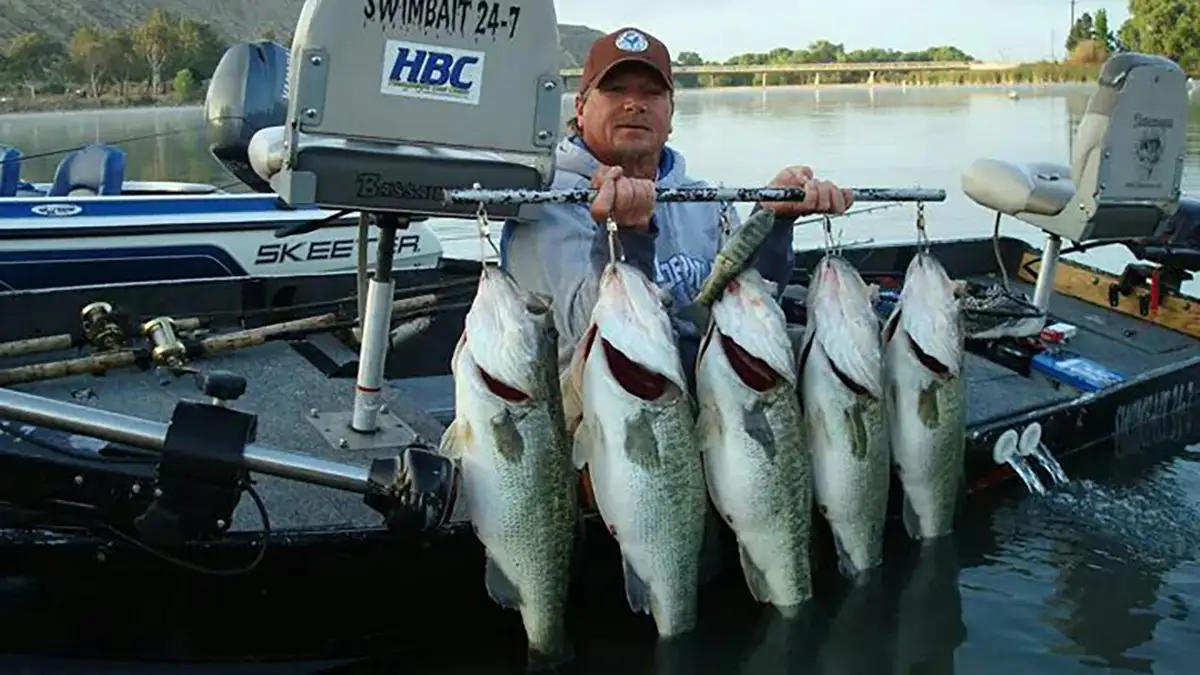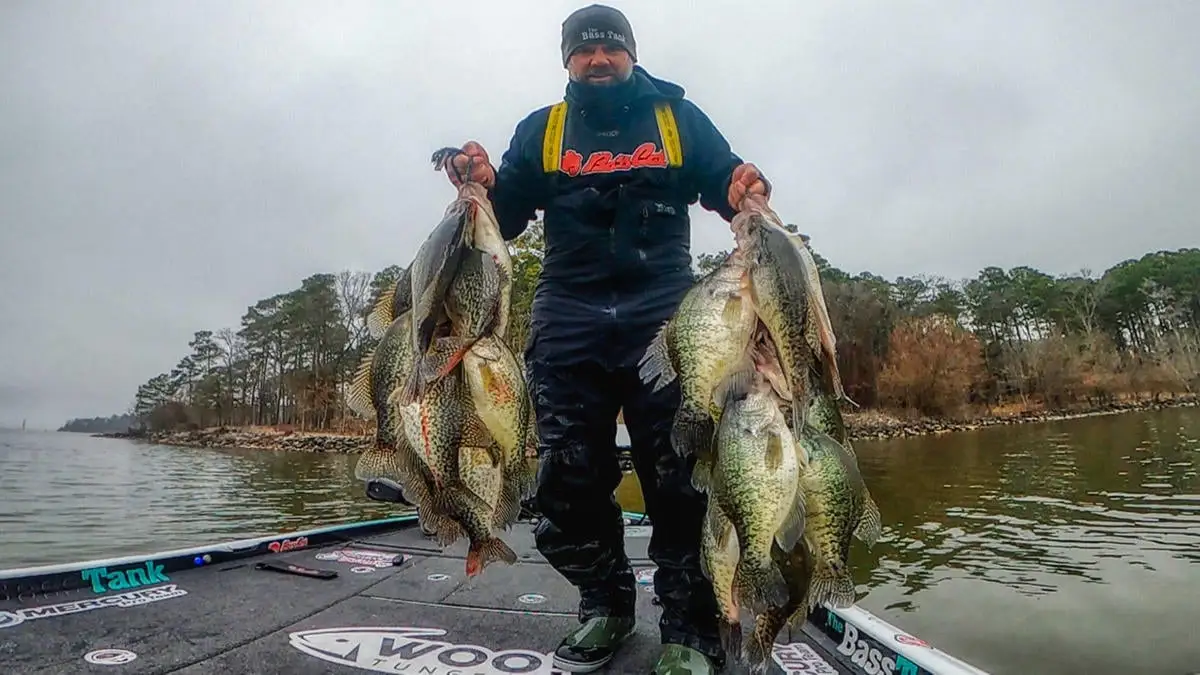Warning: Undefined variable $k in /home/nginx/domains/wired2fishcom.bigscoots-staging.com/public/wp-content/themes/understrap-child-0.6.0/functions.php on line 984
Warning: Undefined variable $k in /home/nginx/domains/wired2fishcom.bigscoots-staging.com/public/wp-content/themes/understrap-child-0.6.0/functions.php on line 987
It’s a brave new world these days with the advent of artificial intelligence and it’s rampant use in social media and digital publishing. But that’s not really the biggest problem with social media in fishing circles. If you follow tournament bass fishing, you probably think that the biggest issue with social media is all the negativity from anglers and fans around that part of the sport. But as bad as that has become, I still don’t think that’s the worst thing social media has done to fishing. For me, the worst thing social media has done to fishing is ruin good fishing spots.
I think it’s great getting to see folks share their big fish and big catches and keeping up with folks fishing around the country. But even for those positives, social media has had some detrimental effects on some fisheries.
LEADS TO CHANGES IN MANAGEMENT
One of the more notable changes to fisheries that was a result of social media was on the crappie Mecca of America: Grenada Lake. The Mississippi Department of Fisheries Wildlife and Parks changed the creel limits on the four flood control lakes that are the most popular for crappie fishing in Mississippi. Those four lakes include Grenada, Sardis, Enid and Arkabutla. The creel limits got changed from 15 fish a person to 10 a person and the boat limit got reduced from 40 fish a day to 25 fish total for the day.
Of course some folks want to blame forward-facing sonar for the increased fish catches. But that’s not what caused it. What happened was tens of thousands of anglers flocked to Grenada after we told everyone it was the best place to catch a 3-pounder. The media fueled the fire that was started by thousands of posts on social media showing off giant slabs and big stringers of crappie. I personally know more than 25 local anglers on Kentucky Lake who regularly went down to Grenada and came back with 120 big crappie every weekend.
They were spider rigging in the spring and fall and trolling in the summer as a break from crappie fishing on Kentucky Lake. Most of the guys I know have been making the trip for more than a decade. But Grenada and the other flood control lakes have been documented as the best places to crappie fish for big and plentiful crappie for years.
I actually think we will see a huge rebound down there because I have already heard a bunch of anglers say it wasn’t worth going down there for two days to take home 50 crappie. So I think the traffic is going to go way down on those lakes and as a result those fisheries will get even better.

SWIMBAIT GUYS BLOW UP BIG BASS LAKES
If you’ve been on social media much, you will see guys with big swimbait bass and the background has been scratched out, dithered out, blurred or re-drawn with photoshop to obscure the location. This looks comical but it’s actually a valid attempt to show off a big catch while not blowing up a small fishery that holds some better-than-average bass that many conventional anglers miss.
I know of a few groups of avid swimbait anglers who regularly catch large fish weighing more than 10 pounds who never post a picture. They have all made a pact to protect a certain fishery or group of fisheries. They share the photos among each other, but never post any of it on social media. Kudos to them for resisting the urge to clout chase on social media.
I have done something similar on Kentucky Lake. It’s hard to live here and post pictures of catches. A lot of the lake is recognizable and a lot of bites get chased by vultures. There is enough bent pole patterning that goes on along the TVA fisheries without posting a shot that lets them triangulate your bite you’ve found.
So with my swimbait fishing, I hardly ever post about it unless I go fish out of state. I do it more than most, but I share the photos with my friends more than social media because I know people will be doing what you do if you share too much and wipe out a good bite you worked a long time to find.
And I know a lot of folks who will have no problem calling you up and telling you to take down a post if you put a good spot on blast.
CHANGES EFFECTIVE PATTERNS
We threw the Whopper Plopper here on Kentucky Lake for two years before we started sharing photos. After a couple of years, the cat was out of the bag, and everyone was throwing one in the fall. The bite went away almost overnight. It’s finally come back a bit now that populations are rebounding. But there was two years where it was magical with lots of 25-pound days on topwater. Just incredible.
We probably could have kept it secret but we enjoyed sharing the info with folks so they could have some fun too. Before you knew it, the pattern disappeared. You could catch fish here and there, but it was never like it was those first two years. And other patterns became a lot more effective.
I’ve seen the same thing happen on other fisheries. Everyone finds out that there is a deep crankbait bite and within a week, the fish are completely conditioned to sound and motion and the bite dries up seemingly overnight. The more people share their catches, promote their favorite lures and such, the more the bites diminish.

FFS NOT AS BAD AS SOCIAL
People think forward-facing sonar not only makes every fish magically bite, but it somehow magically lands you right where the biggest and most fish are.
I actually think it’s the exact opposite. It forces me figure out a bite better on my own, instead of doing what I see everyone else doing on social media. It lets me go off the beaten path and hunt for fish others aren’t looking for. It let’s me go hunt fish out over nothing and leave the bank beaters to their favorite ways to fish.
Meanwhile, if I go on social media and talk about the awesome shallow crankbait bite in the prespawn, then that bite becomes exponentially harder to find consistently within a week. I actually like that FFS makes fishermen go hunt fish instead of clogging up the places social media told them the fish were biting (ledges, docks, topwater, etc.).
THROW THE CURVEBALL
It has been fun to take pictures with fish in obscure places that have nothing to do with where I caught them. That’s always fun to send folks scavenging on social media for good bites on wild goose chases. And I take a lot of my pictures by simply turning around and facing out into the middle of a big lake.
Don’t get me wrong, I’ve spent 20 years helping people catch fish better. And I probably answer more private messages than anyone in the space. So I will try to help people anytime I can. But I’m careful about sharing too much specific spot related stuff on fishing on social media because I still love fishing and still its my best escape. I will give up systems and a bait that is working for me without going into the full details of where I used it.
I think anglers should be more protective of good fishing areas on social media. I am all for sharing great catches. But protect your fisheries and your spots if you want to keep catching good quality of fish. Get out and explore and be proud of your catch. Someone else doesn’t need to validate how great your catch was. If you enjoyed the experience, save it and be protective of it.











